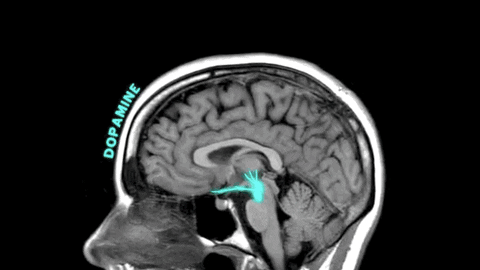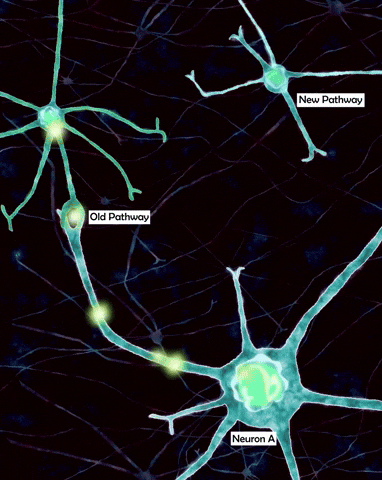Have you ever wondered why you can’t seem to follow through with your own plans?
Why that diet only lasts three days?
Why you procrastinate on the business you desperately want to build?
Or, why you keep attracting the same relationship patterns that leave you feeling drained?
Then today’s read is for you!
Let’s be real—we ladies are the queens of self-sabotage. Research shows we do it WAY more than men (no surprise there!).
And you know when it gets even worse? When we’re juggling a million responsibilities at once…
Don’t worry, you’re not alone.
Here’s what might surprise you: your self-sabotage isn’t a character flaw or moral failing. It’s biology.
Your brain is literally programmed to keep you stuck.
Ever seen images of a giant elephant held captive by only a thin rope?
Like that elephant, you possess incredible strength and capability, yet remain tied down by something that, logically, you should easily break free from.

The elephant remains captive not because of the rope’s strength, but because of a belief installed when it was young, and too small to break free. Your self-sabotage works the same way.
Throughout your childhood—particularly before age seven—your brain was in a highly receptive state, downloading “programs” for survival from your environment.
These programs now run silently in the background of your adult life, triggering behaviors that conflict with your conscious desires.
This isn’t just psychological theory. It’s neuroscience. I write more on this in the article Wellbeing Is Not What You Think It Is.
Scientists have known for decades that up to 95% of our brain function occurs at the subconscious level.
That means that even with the best intentions and clearest goals, your conscious mind (that 5%) is often fighting an uphill battle against deeply embedded neural pathways formed years ago.
These pathways are the reason why:
- You know you should save money, but keep impulse buying
- You want a healthy relationship, but keep choosing unavailable partners
- You crave career advancement, but miss deadlines or self-sabotage opportunities
- You desire health and vitality, but consistently choose behaviors that deplete you
The good news? Understanding the biology of belief gives us the roadmap for change.
When you understand that self-sabotage isn’t a moral failing but a neurobiological pattern, everything changes.
Your path forward isn’t about trying harder with willpower. It’s about rewiring the very neural circuitry that’s keeping you captive.
That’s exactly what I’m going to share with you today: A science-backed, 5-step plan that addresses both the biology and psychology of self-sabotage.
By the end of this read, you’ll understand not only why you’ve been stuck, but exactly how to create lasting change by working with your brain’s natural capacity for transformation.

The Invisible Ropes: Why Your Brain Resists Change
Most approaches to overcoming self-sabotage focus entirely on behavior modification and willpower. “Just do it.” “Push through.” “Stay disciplined.“
But these approaches fail because they don’t address what’s happening beneath the surface.
Think about it: if 95% of your brain activity is subconscious, then focusing only on conscious strategies is like trying to steer an elephant by pulling on its tail.
You might influence its direction momentarily, but eventually, the elephant will go where it wants.
To understand why change is so difficult, we need to understand how our brains develop.
From birth until around age seven, your brain was predominantly in a theta brainwave state—essentially a hypnotic state of high suggestibility.
During this critical window, you weren’t just learning facts about the world; you were absorbing beliefs about yourself, your worth, and what you needed to do to survive in your unique environment.
Like the elephant who first encountered the rope when she wasn’t strong enough to break free, you formed limiting beliefs during a time when you couldn’t rationalize or question them.
Maybe you witnessed your parents fighting about money and concluded: “Money causes conflict. It’s safer to struggle financially.“
Perhaps you were often told to be quiet, forming the belief: “My voice doesn’t matter. Staying small keeps me safe.“
Or you might have experienced inconsistent love and attention, programming the belief: “I must achieve to be worthy of love.“
These beliefs became neural pathways, physical structures in your brain that dictate your automatic responses to situations.
And here’s the critical part: these pathways activate most strongly under stress.
When you’re relaxed, your conscious, rational mind (your prefrontal cortex) remains online. You can make decisions aligned with your goals and values.
But introduce stress—a deadline, conflict, financial pressure—and your brain reverts to its most established neural pathways. Your “programs” take over.
This is why you might be perfectly capable of healthy eating until work stress hits, then suddenly find yourself elbow-deep in the chocolate jar.
Or why you communicate effectively in most situations, but revert to defensive patterns during conflict.
Your stress response literally bypasses your conscious mind and activates old survival programs.
Bruce Lipton, a cellular biologist and pioneer in epigenetics, has extensively researched how our perceptions and beliefs influence our biology at the cellular level.
His research shows that when we’re in stress response, our cells literally close down growth and repair functions. They go into protection mode.
The same thing happens with our behaviors. Under stress, we abandon growth-oriented actions in favor of protection-mode behaviors—which often manifest as self-sabotage.
This is the being beneath the behavior.

Most self-improvement approaches fail because they address only the behavior without recognizing the subconscious programming driving it. It’s like trying to change the direction of a river without addressing its source.
But here’s where the science gets exciting.
Research in neuroplasticity has proven that our brains can change—at any age, under any circumstances.
The neural pathways created in childhood aren’t permanently fixed. They can be rewired.
And here’s something even more remarkable: your emotional state—your energy frequency—directly impacts this rewiring process.
When you exist in higher vibrational states like joy, gratitude, and self-compassion, your brain becomes more receptive to creating new neural pathways.
This is the high vibration advantage.
Two people can apply the exact same strategies for change. One approaches it from a state of frustration and self-criticism. The other from a state of curiosity and compassion. The second person will rewire their brain significantly faster.
Science now shows that the emotions of joy, curiosity, and compassion produce neurochemicals that enhance neuroplasticity—literally making it easier for your brain to form new connections and break old patterns.
This isn’t just feel-good psychology. It’s biochemistry.
The stress hormones produced when you’re in self-criticism or frustration mode actively inhibit neuroplasticity.
Meanwhile, the neurochemicals produced during positive emotional states enhance your brain’s ability to create change.
So before I share the 5-step plan to overcome self-sabotage, understand this fundamental truth: the way out of self-sabotage isn’t through force, but through awareness and elevated states of being.
You don’t break the elephant’s rope by pulling harder. You help the elephant realize the rope no longer has power.

Your 5-Step Neural Liberation Plan
So how do we actually break free from the invisible ropes of self-sabotage? How do we rewire neural pathways that have been forming since childhood?
The process is simpler than you might think, though it requires something many of us aren’t taught to cultivate: self-awareness.
Your brain has been running on autopilot for decades. The first step to change isn’t action—it’s observation.
Below is your 5-step neural liberation plan. Each step builds upon the one before it, creating a framework for sustainable transformation that works with your brain’s natural capacity for change.
Step 1: Become the Observer
Most people live their entire lives reacting to circumstances without ever witnessing their own patterns.
The observer effect in quantum physics tells us that the mere act of observing a phenomenon changes that phenomenon. The same applies to your behavior.
When you step back and become the witness to your thoughts, emotions, and actions, you create space between stimulus and response. This space is where your power lies.
Actionable exercise: Pattern recognition journaling
For one week, keep a small notebook with you. Each time you notice yourself engaging in self-sabotage (procrastination, negative self-talk, avoiding opportunity, etc.), write down:
- What triggered the behavior
- What thoughts went through your mind
- What emotions you felt in your body
- What action you took as a result
Don’t judge what you observe—just document it with curiosity.
By the end of the week, you’ll likely notice patterns emerging. Perhaps certain triggers consistently lead to specific thoughts, which produce particular emotions, which drive specific behaviors.
This awareness alone often reduces the power of the pattern.
As one client told me after completing this exercise: “I can’t believe how automatic these responses were. Just seeing them written down made me realize I have a choice.“
Step 2: Question Your Programming
Once you’ve observed your patterns, it’s time to trace them to their source.
Your self-sabotaging behaviors aren’t random; they’re solutions to problems your brain identified in childhood.
For example, procrastination might stem from a belief that “mistakes lead to rejection.“
Overspending might connect to a belief that “my worth comes from what I own.”
Avoiding intimacy might link to “vulnerability leads to pain.“
Actionable exercise: Belief backtracking
Take your top three self-sabotage patterns and ask:
- What belief might be driving this behavior?
- When did I first learn this belief?
- Who modeled this behavior for me?
- How did this belief serve me in the past?
- Is this belief still serving me now?
This isn’t about blaming parents or caregivers. They were operating from their own programming.
This is about understanding the origin of your beliefs so you can consciously choose whether to keep them.
A client once realized her perfectionism stemmed from watching her mother face criticism from her father. She had formed the belief: “If I do everything perfectly, I won’t be criticized.“
This awareness allowed her to see her perfectionism not as a character flaw, but as an adaptive strategy that no longer served her adult life.
Step 3: Redirect Your Focus
Where focus goes, energy flows, and results show.
Your brain strengthens neural pathways that receive attention, so the key to change is not fighting old patterns but creating and reinforcing new ones.
This step utilizes the power of your conscious mind to interrupt automated patterns before they fully activate.
Actionable exercise: Pattern interruption and redirection
Identify your three most common self-sabotage triggers from Step 1. Create a specific interruption strategy for each:
Physical interruption: When you notice the trigger, change your physical state. Stand up if sitting, take three deep intentional breaths, splash water on your face, or simply place your hand on your heart.
Physical change disrupts the automated neural firing.
Question interruption: Ask yourself empowering questions like “What would serve my highest good right now?” or “What would I do if I loved myself in this moment?“.
Your brain is like a Google search engine – it will always seek to answer whatever question you present. This is why questioning “Why does this always happen to me?” tends to continue the validated experience.
Focus redirection: Have a pre-planned focus point for each trigger. If social media comparison triggers self-doubt, have a specific gratitude practice ready to redirect your attention.
A client who struggled with stress eating created a simple interruption: when she felt the urge to emotionally eat, she would place her hand on her heart, take four extended breaths in through the nose and out through the mouth, and ask, “What am I really hungry for?“.
This small pattern interruption created enough space to make a conscious choice rather than an automated reaction.
Step 4: Rewire Your Neural Pathways
This step is where real transformation occurs. Now that you’ve created space between trigger and response, you’ll deliberately create new neural pathways that align with your conscious desires.
Actionable exercise: Daily rewiring practice
For 10 minutes each morning, practice this three-part rewiring technique:
Visualization: Vividly imagine yourself walking through your day ahead in your new, desired way. See it in detail, feeling the emotions of empowerment and alignment.
I have a free meditation download here that can help you with this process.
Your brain processes imagined experiences similarly to real ones, creating new neural pathways.
Embodiment: Physically act out or embody the new behavior.
If you’re rewiring a pattern of avoiding difficult conversations, practice speaking assertively out loud. If you’re changing a pattern of procrastination, practice the physical actions of beginning tasks immediately.
Celebration: This is crucial! When you take even small actions aligned with your new pattern, celebrate them. This releases dopamine, a neurotransmitter that strengthens neural connections and makes the new behavior more likely to repeat.

A client rewiring her tendency to say yes to commitments she couldn’t fulfill practiced visualizing herself saying “Let me check my schedule and get back to you” instead of an immediate yes.
She physically rehearsed saying these words each morning, and celebrated with a small victory dance each time she implemented the new response in real life.
Within weeks, her new boundary-setting neural pathway became stronger than her people-pleasing pattern.
Step 5: Elevate Your State of Being
The final step is the most powerful and often the most overlooked. Your emotional state—your energetic frequency—directly impacts how easily your brain forms new neural connections.
By intentionally cultivating high-vibrational emotional states, you create a biochemical environment that supports rapid neurological change.
Actionable exercise: State elevation practices
Incorporate these three state-elevation practices into your daily routine:
Morning frequency setting: Begin each day with a 5-minute practice to deliberately set your energetic frequency. This might be turning to your partner and each sharing three things you’re grateful for, heart-focused breathing, or joyful movement (Check out this article for interesting insights on the transformational power of walking).
The specific activity matters less than the emotional state it produces.
Pattern-break joy infusions: Schedule 2-3 brief “joy infusions” throughout your day, especially during typically stressful periods.
These are 60-90 second breaks to engage in something that quickly elevates your state: listen to an uplifting song, play tug-of-war or catch with your dog, look at photos that make you smile, or step outside to feel the sun on your face.
Evening energy recalibration: Before sleep, practice releasing low-vibrational energy and reinforcing high-vibrational states.
This might involve a forgiveness practice, celebration of the day’s wins, or a guided meditation focused on peace and possibility.
A client who struggled with chronic self-doubt implemented all three practices, starting her day with a “possibility dance party,” taking brief breaks to look at photos of times she felt confident, and ending her day by writing three ways she honored her worth.
Within a month, she reported that her self-doubt, while still occasionally present, no longer controlled her actions.
The Power of Your Liberation
When you implement these five steps consistently, the neural pathways of self-sabotage begin to weaken, while new pathways aligned with your true desires strengthen.
This isn’t just psychological change—it’s biological transformation.

Your brain physically rewires itself.
The hormones and neurotransmitters circulating in your body shift.
Even your gene expression changes, as research in epigenetics has shown that our perceptions and beliefs can turn genes on or off.
Like the elephant who one day discovers the rope no longer holds her, you’ll find yourself naturally taking actions aligned with your desires, without the internal struggle that once held you back.
The most beautiful part of this process is its ripple effect.
As you liberate yourself from self-sabotage, you model new possibilities for others. Your children, friends, colleagues, and community witness what’s possible when someone breaks free from limiting beliefs.
Remember: you are exactly where you need to be for the lessons to take you where you want to go, but the magic only comes with perspective.
When you realize you have the power to change anything, everything changes.
Ready to Go Deeper? Introducing WILD Woman
If this article resonated with you and you’re ready to take your neural transformation to the next level, I’ve created something just for you.
My WILD Woman eBook (+ Audio Guide) is your comprehensive guide to breaking free from limiting beliefs and reclaiming your natural vitality.
For just $9, you’ll discover:
- The complete WILD Framework for mind-body-spirit transformation
- The mindsets to elevate your Wellness, Income, Love (for self and others), Lifestyle, and Direction.
- Advanced neuroplasticity exercises to accelerate your progress
- And much more…
This isn’t just information—it’s a complete system for liberation from self-sabotage patterns.
Click here to get instant access to WILD Woman and take the first step toward true freedom.
When you change your mind, you have the power to change the world.
I’d love for you to give this plan a try, and drop a comment below to let us know how it went for you!
Want to join the hundreds one women taking deep dives into these conversations each Saturday? Subscribe to Unparalleled Potential here.
Until next week, in health & happiness – Jem xx






Read the Comments +